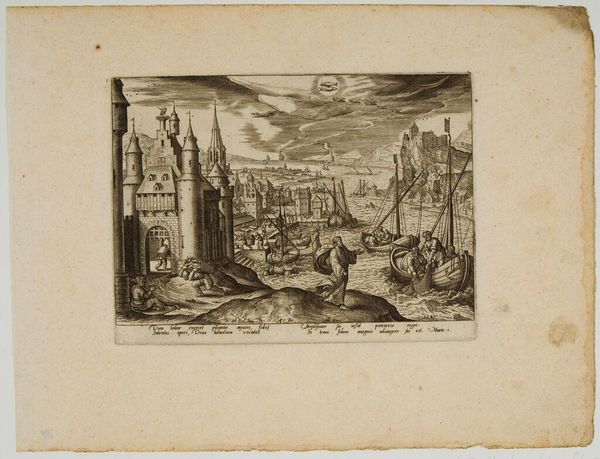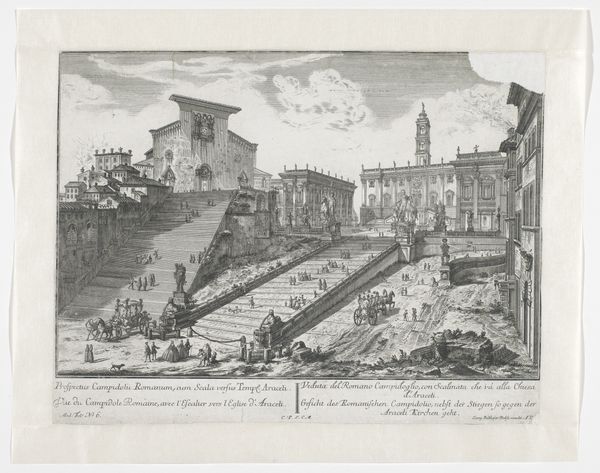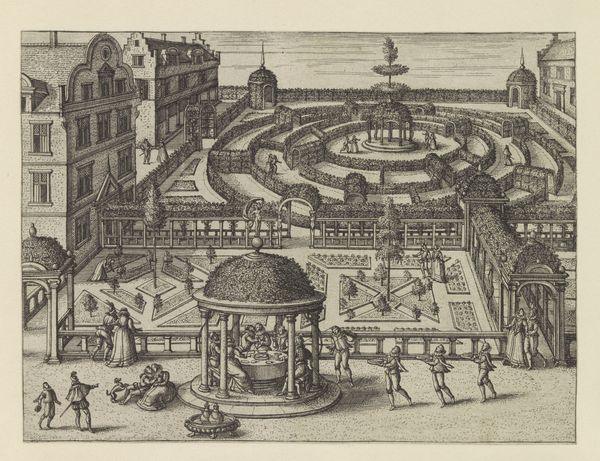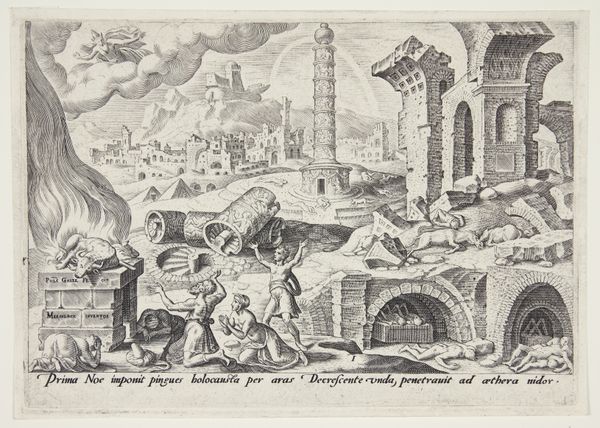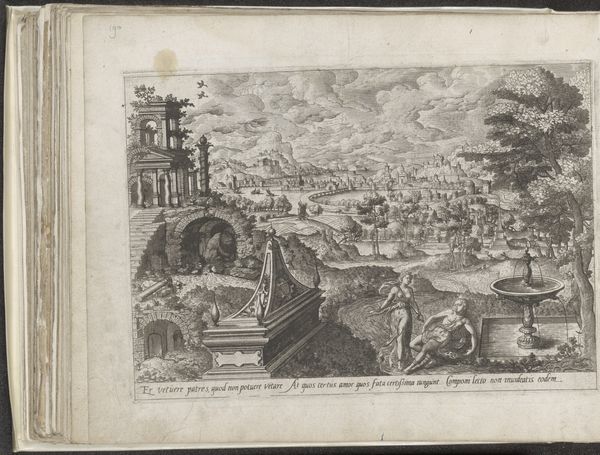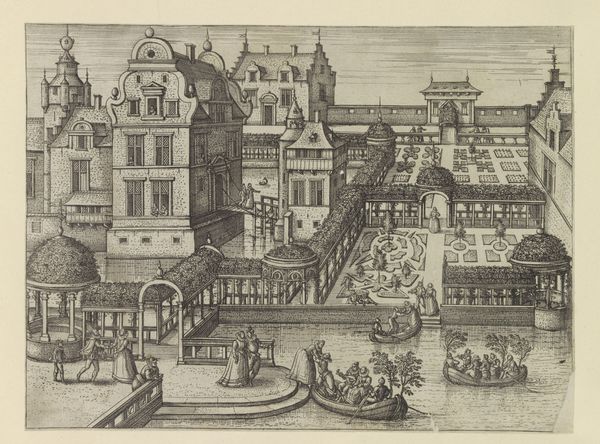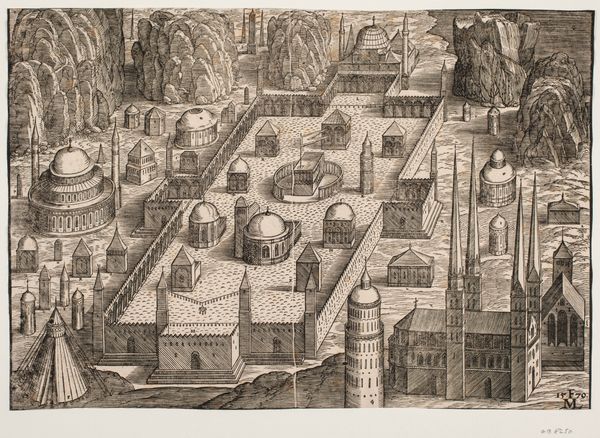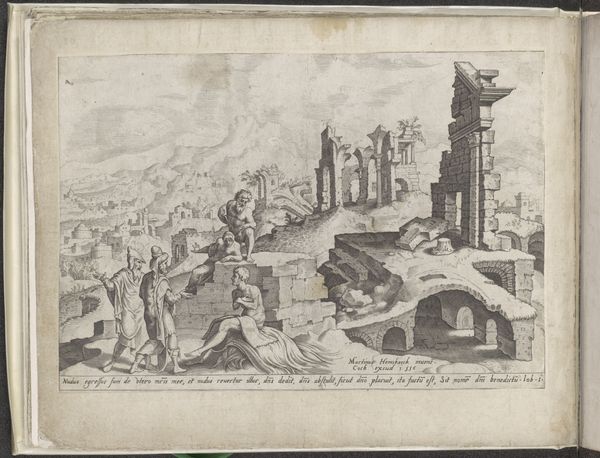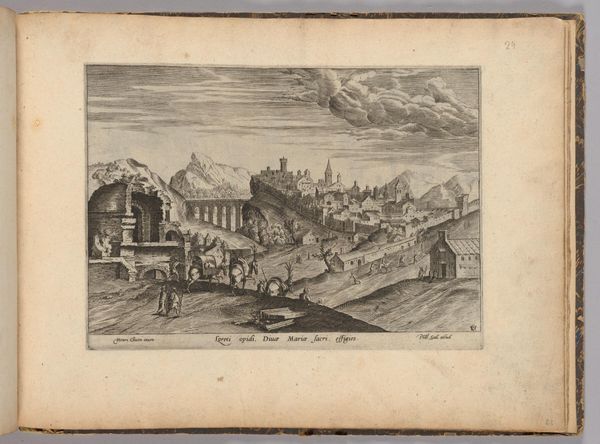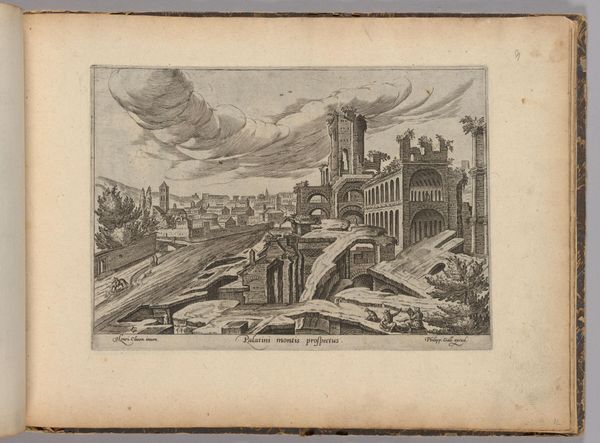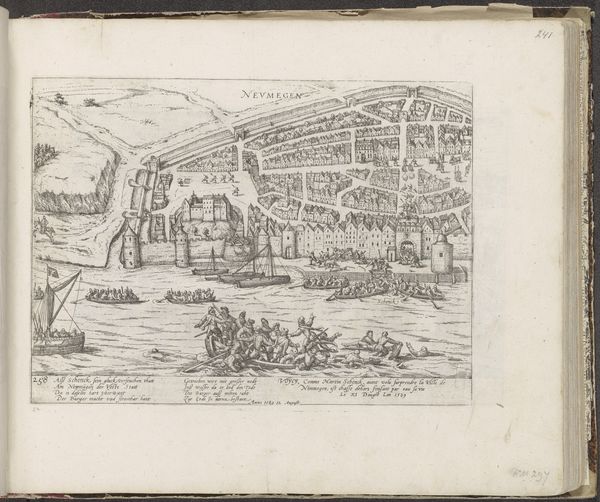
drawing, print, etching
#
drawing
# print
#
etching
#
landscape
#
form
#
11_renaissance
#
line
#
cityscape
#
northern-renaissance
Dimensions: plate: 6 1/16 x 8 1/8 in. (15.4 x 20.7 cm) sheet: 7 3/8 x 10 1/16 in. (18.7 x 25.5 cm)
Copyright: Public Domain
Editor: Here we have Lucas Gassel’s etching, "Riverscape with a Double Bridge," created sometime between 1555 and 1575. The intricacy of the linework depicting this bustling city is really striking. It almost feels like a stage set. What's your take on this piece? Curator: Well, I'm immediately drawn to how this etching participates in the early modern cultural obsession with the ideal city. It reflects a period when urban centers were seen not only as sites of commerce and power but also as potent symbols of civilization and human ingenuity. Notice how the bridges, particularly the double bridge, visually dominate the scene, symbolizing connection and control over nature. Editor: Connection and control… So, you see the bridge as more than just infrastructure? Curator: Precisely. It’s a statement about humanity’s ability to shape its environment and to create order. Etchings like this, widely circulated as prints, played a role in disseminating ideas about urban planning and civic identity. Ask yourself, who were the patrons of these prints, and what did they aspire to represent? The city and its connection to trade and resources were integral to solidifying social relations and power structures. The level of detail emphasizes an organized and powerful society. Editor: That’s a good point, considering that this print would have reached a broad audience beyond the elite, perhaps influencing their perceptions of urban life and their place within it. Curator: Exactly. Think about the rise of the merchant class and their stake in these cities. How did Gassel's detailed rendering of architecture influence notions of progress and order during the Northern Renaissance? Editor: I hadn't considered how this Riverscape acted as a sort of visual propaganda! It shows me how deeply art is embedded in history and social structures. Curator: Indeed, and by understanding that, we get a richer understanding of art’s ongoing relevance to public life and its reflection on socio-political dynamics.
Comments
No comments
Be the first to comment and join the conversation on the ultimate creative platform.

